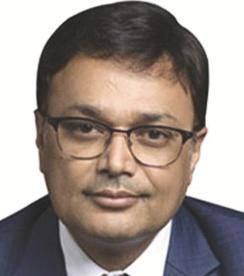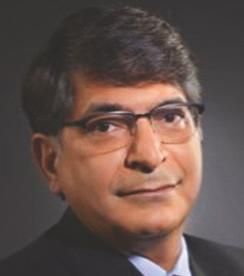INMA South Asia News Media Summit 2022 spotlights region’s transformation and growth path
Supported by the Google News Initiative, Stibo DX, and INS (The Indian Newspaper Society), the virtual INMA South Asia News Media Summit, was held on August 11-12, 2022, attracting 609 delegates from 28 countries. Key focus areas at the conference were media strategies, tools and processes that are driving organisational sustainability, revenue growth, and transforming business models in South Asian media companies.

INMA South Asia News Media Summit 2022 featured diverse discussions from South Asian leaders and experts from HT Media Ltd, Accenture, Business Standard, FilterCopy, ABP Network, The Morning Context, TV Today, Media.Monks, Nielsen Media, Prothom Alo, and Taboola. Global keynotes from INMA, Innovation Media Consulting Group, Print Power, and Reuters Institute For Media Studies rounded out the sessions.
Key takeaways
Key takeaways from the six hours of programming included:
- Be better custodians of the great digital pivot: INMA CEO Earl Wilkinson shared the biggest trends in subscriptions, the rise of product, closer alignment of the newsroom with the business of news and data being central to growth strategies.
- Strategy and direction in news media are in a new phase: Juan Señor, President of Innovation Media Consulting Group in the U.K., discussed that the digital revolution is in a new phase, backed by data, AI, and insights. This is due primarily to Web 3.0 requiring publishers to focus on charging for content, mastering digital storytelling, and reinvesting in quality journalism.
- Two-pronged approach to monetisation works for traditional media houses: Investments in data platforms, personalisation, first-party data, pricing (along with micropayments), and video (including short-form) monetisation have emerged as focus areas for transformation, according to a panel discussion from India with Praveen Someshwar, Managing Director and CEO, HT Media; Ashish Mishra, Co-founder and Editor-in-Chief, The Morning Context; Salil Kumar, CEO, TV Today (Digital); and Avinash Pandey, CEO, ABP Network. INMA attendees learned that traditional media houses have a two-pronged approach to monetisation: reach (via advertising), and going deep (via subscriptions), as opposed to start-ups like TMC in the media tech space focused on a product-first strategy built largely around reader revenue.
- Print advertising ROI is competitive in the short-term as well as long-term: Dolly Jha, Managing Director for India’s Nielsen Media, shared some good news for print advertising: print can drive higher ROI than TV and online in the short-term, with potential to drive tactical outcomes. Additionally, print long-term ROI is second-best after TV, and aids in brand building. Print can create and establish a new narrative around effectiveness, concentrated power, trust, brand safety, microtargeting, and innovative formats.
- Measuring content performance and creating value exchange are essential drivers for publishers to achieve breakout success: Smita Salgaonkar, Country Manager – Data and Digital Media at India’s Media.Monks, told attendees that publishers should be designing reader segments by measuring content performance using metrics correlated to the growth of high-value segments. Additionally, creating genuine value exchange use cases and generating more content will entice readers to lend their data. Finally, publishers must understand that value exchange relies on the correct orchestration of complex technologies.
- Contextual targeting and maximising lifetime value of users is next opportunity for publishers: According to Chanan Fogel, Vice President, APAC at Taboola in Thailand, being able to automatically serve a unique, optimised experience for every user — dynamic and defined by AI — is the next opportunity for publishers. With a backdrop of increased privacy concerns, it’s important to approach contextual targeting correctly with personalisation and smart segmentation. Meanwhile, publishers can maintain control by adjusting the composition of content recommendations according to reader priorities in all formats and experiences.
- Print should be included in the marketing mix, but effectiveness should be measured differently: Ulbe Jelluma, Managing Director of Europe for Print Power in Belgium, warned INMA summit participants to beware of the perception versus reality gap in print when determining media choice. He shared the need for integrating print in the marketing mix, and discussed how performance levels for print should be measured: by business effects, response to adverts, attitudinal changes, behavioural changes, amplification of other media performance, and dwell time.
- Approach audience strategy as breadth (reach), width (application), and depth (targeting): Neeraj Sharma, Managing Director at Accenture CMT – Growth Markets, shared that publishers should know which audience to target and how to build desired audiences. Additionally, accelerate first-party data scale and quality, build singular customer ID and identity extensibility, and experiment with new tactics, and be open to leveraging partnerships, he said.
- Bundling and engagement are winning strategies in subscriptions: According to Greg Piechota, INMA’s Readers First Initiative lead, churn kills growth in subscriptions, and bundling is the next big thing. Most conversions and renewals are outcomes of engagement, transitioning to readers-first, and building reader engagement for retention backed by data.
- Bridge print and digital platforms to provide value for advertisers and readers: Prothom Alo strategically moved to a dual approach of online-first and print to create value. Matiur Rahman, Editor of the Bangladesh media company, shared how this works in an integrated newsroom environment and has allowed them to discover opportunities: campaigns based on special days, regional activities, print, and digital events, along with digital readiness, diversification, and a value-driven integrated sales approach.
- Create value with branded content: Content can help create value for brands, and is a strong strategy for today’s market of consumers influenced by viral videos, on-demand entertainment, and unique experiences. Aditi Shrivastava, Co-founder and CEO of PocketAces – FilterCopy in India, told INMA attendees to maximise ROI for online, offline, and app brands by leveraging the value of storytelling, building awareness, increasing brand loyalty, creating conversion tactics, and measuring success.
- Selective news avoidance is growing, gateways for accessing news are changing: Federica Cherubini, Head of Leadership Development for the Reuters Institute for the Study for Journalism, shared a wide range of insights for editorial teams from the institute’s global Digital News Report 2022: selective news avoidance is growing over time, and gateways for accessing news are changing. She also discussed the changing news habits and attitudes of younger audiences and the contribution of e-mail news in monetisation and engagement. Audio and podcasts are continuing to increase in popularity, along with interest in climate change.
Registrants received access to the live stream along with all recordings and presentations associated with the Summit.
Charlotte Observer’s Rana Cash reflects on her first year as executive editor of the paper
It’s been almost a year since Rana Cash was named executive editor of Charlotte Observer. She’s the first black person to hold that position in the paper’s 136-year history. Rana comes to Charlotte from Georgia, where she was executive editor of Savannah Morning News. This isn’t Rana’s first rodeo in Charlotte. From 2010 to 2016, she was deputy editor of the Charlotte-based Sporting News magazine. Before that, she covered Georgia Tech football and basketball for the Atlanta-Journal Constitution. In her first interview since joining the Charlotte Observer, she talks about her vision for the paper and her start in journalism while on a track scholarship at Florida A&M University.
















 It’s been almost a year since Rana Cash was named executive editor of Charlotte Observer. She’s the first black person to hold that position in the paper’s 136-year history. Rana comes to Charlotte from Georgia, where she was executive editor of Savannah Morning News. This isn’t Rana’s first rodeo in Charlotte. From 2010 to 2016, she was deputy editor of the Charlotte-based Sporting News magazine. Before that, she covered Georgia Tech football and basketball for the Atlanta-Journal Constitution. In her first interview since joining the Charlotte Observer, she talks about her vision for the paper and her start in journalism while on a track scholarship at Florida A&M University.
It’s been almost a year since Rana Cash was named executive editor of Charlotte Observer. She’s the first black person to hold that position in the paper’s 136-year history. Rana comes to Charlotte from Georgia, where she was executive editor of Savannah Morning News. This isn’t Rana’s first rodeo in Charlotte. From 2010 to 2016, she was deputy editor of the Charlotte-based Sporting News magazine. Before that, she covered Georgia Tech football and basketball for the Atlanta-Journal Constitution. In her first interview since joining the Charlotte Observer, she talks about her vision for the paper and her start in journalism while on a track scholarship at Florida A&M University.